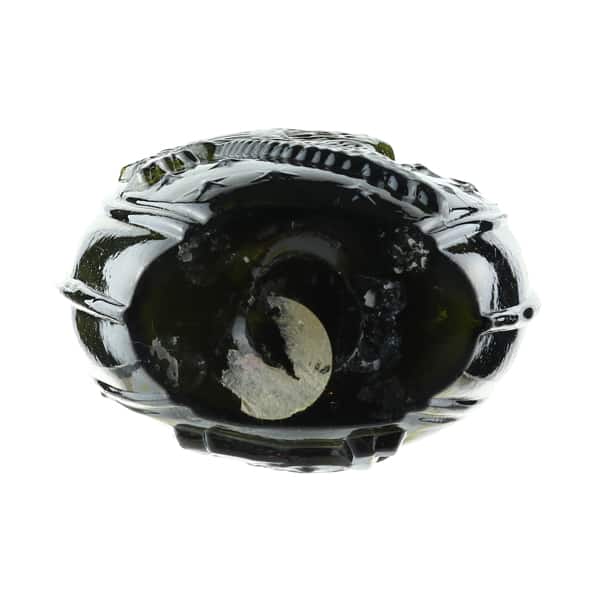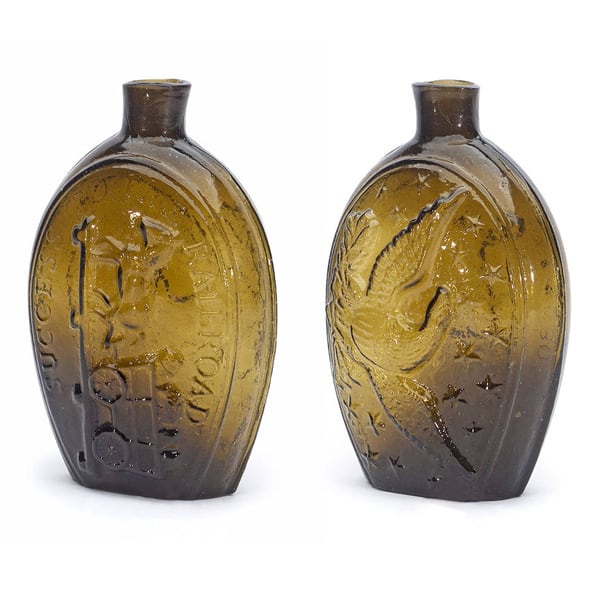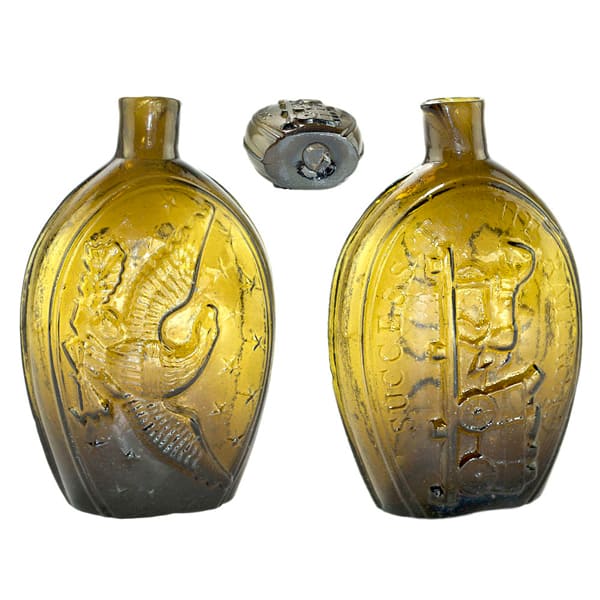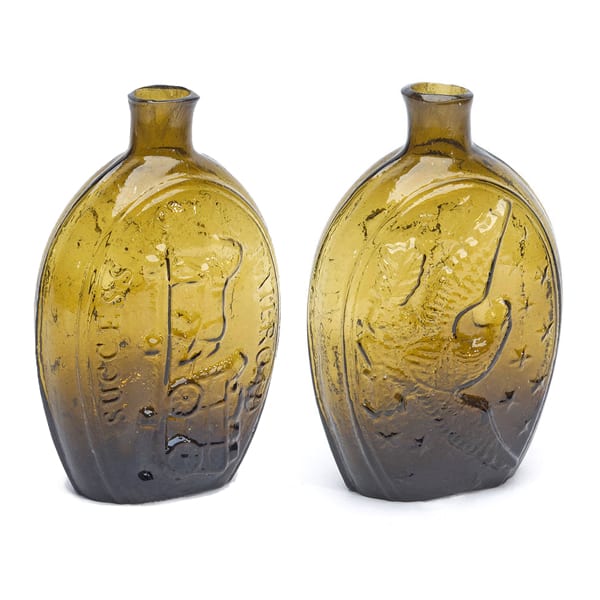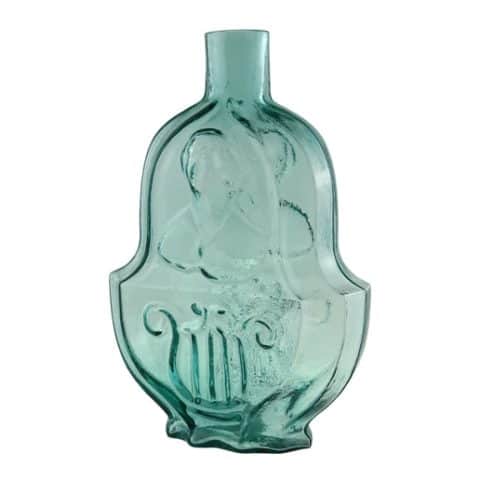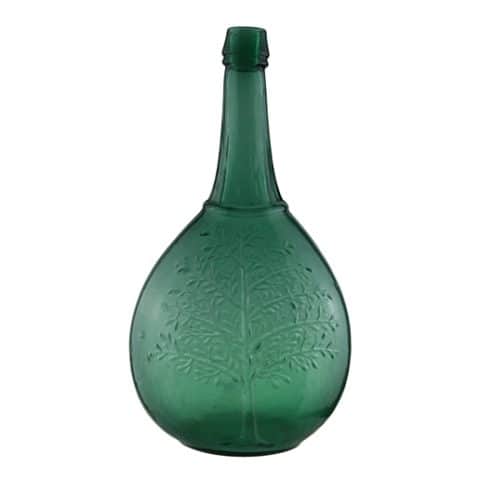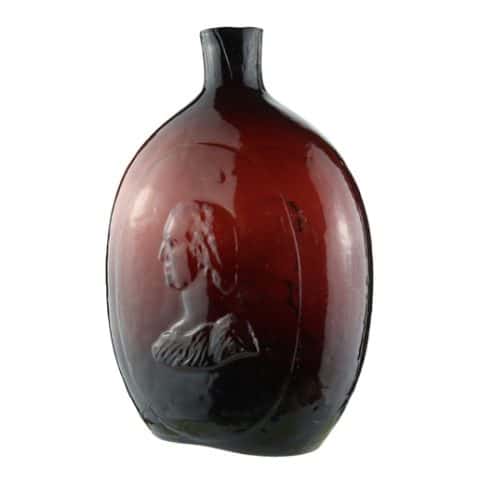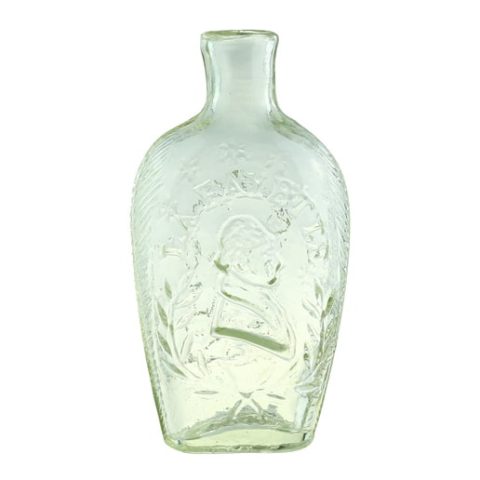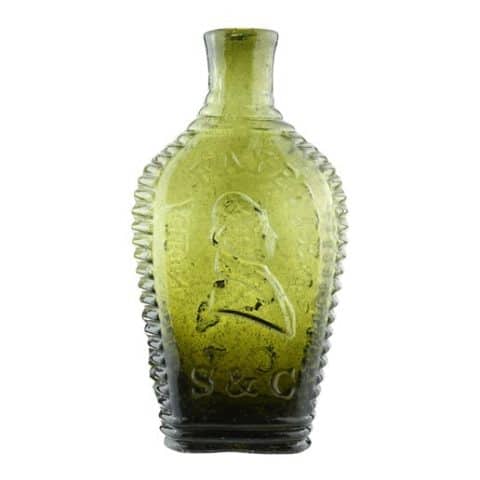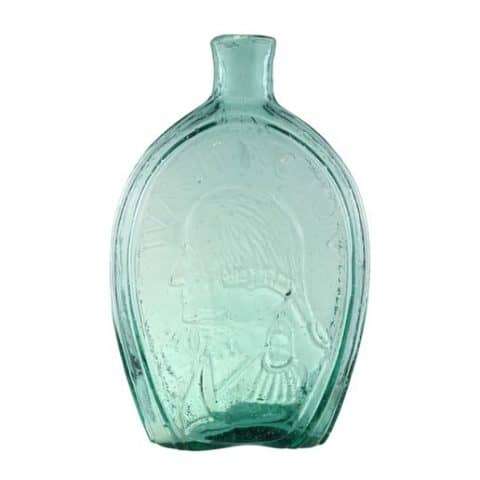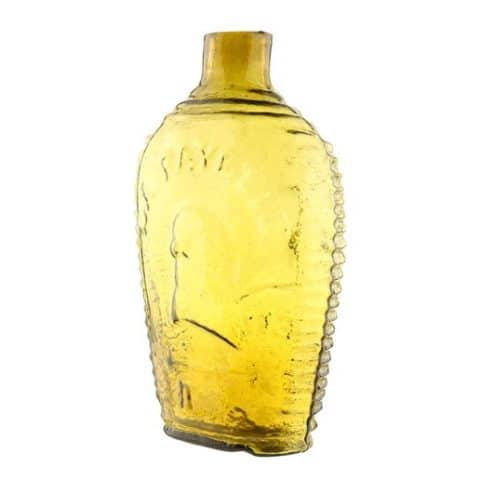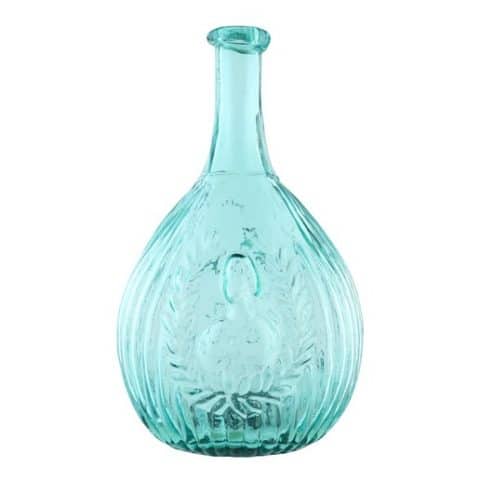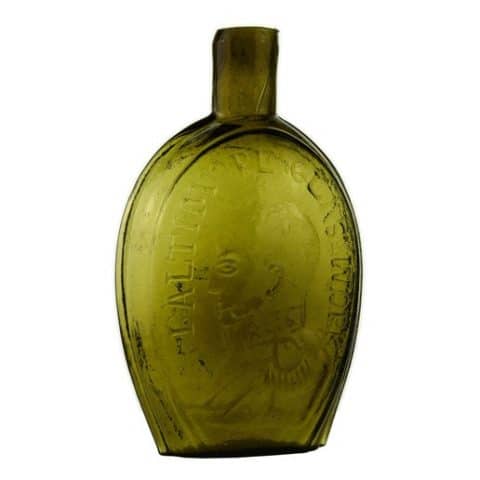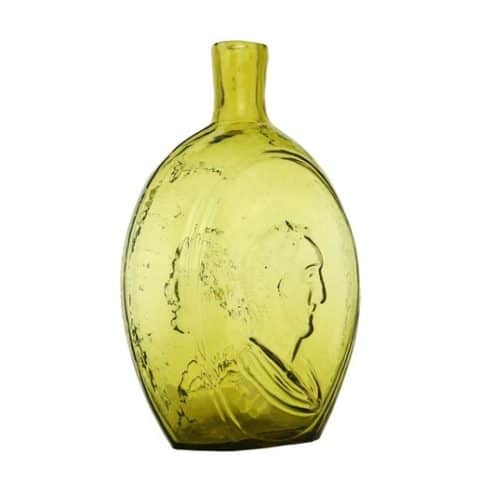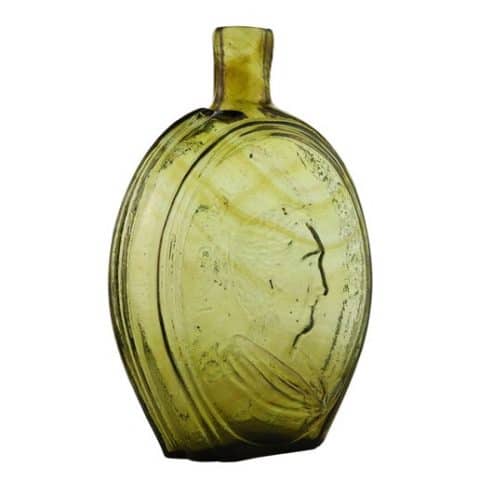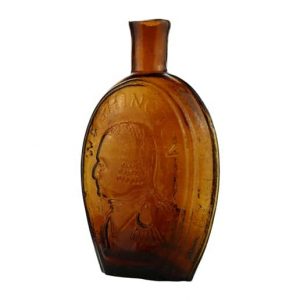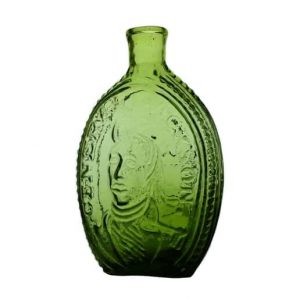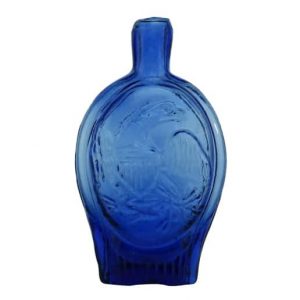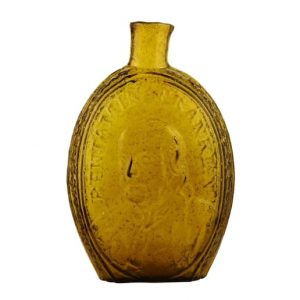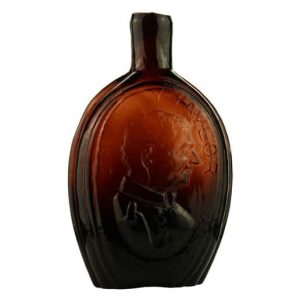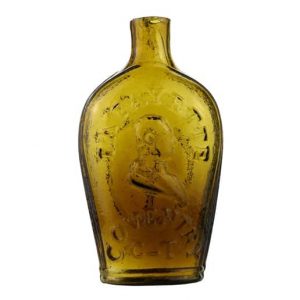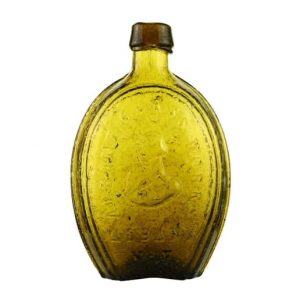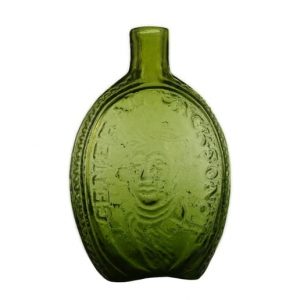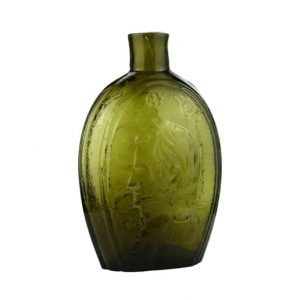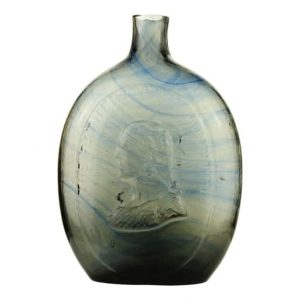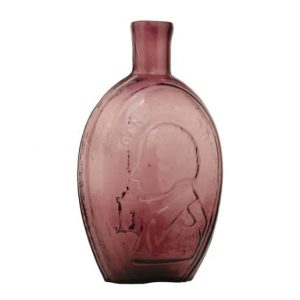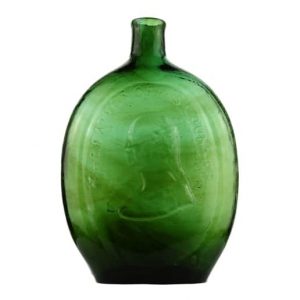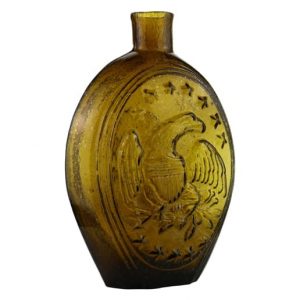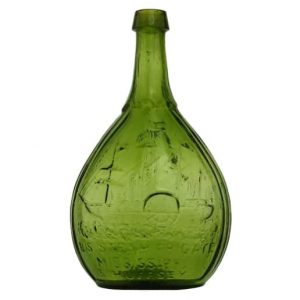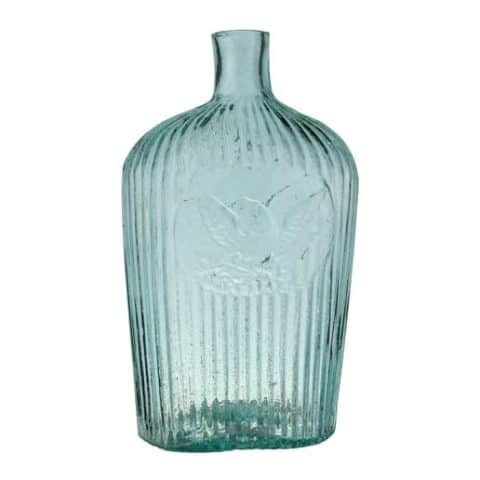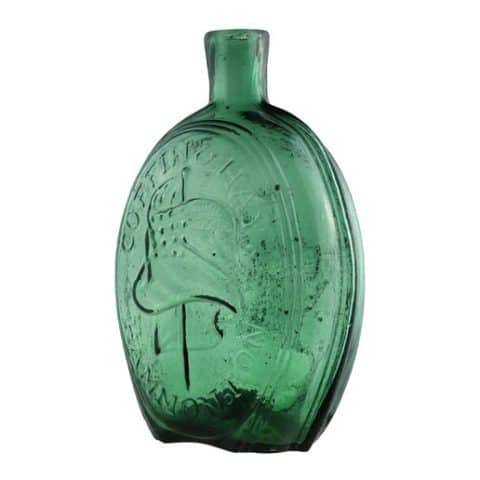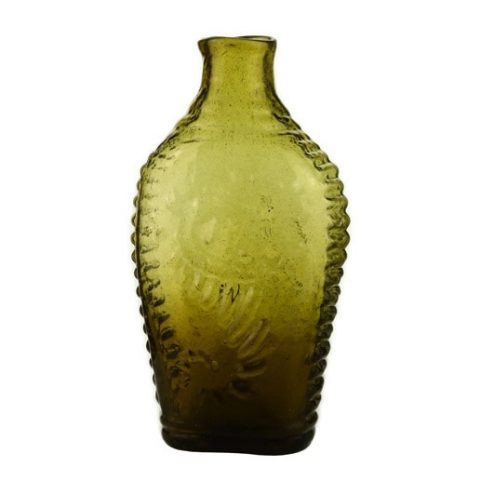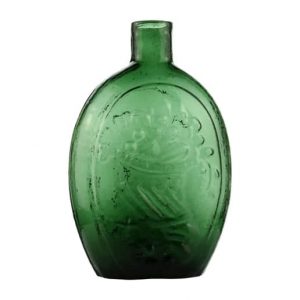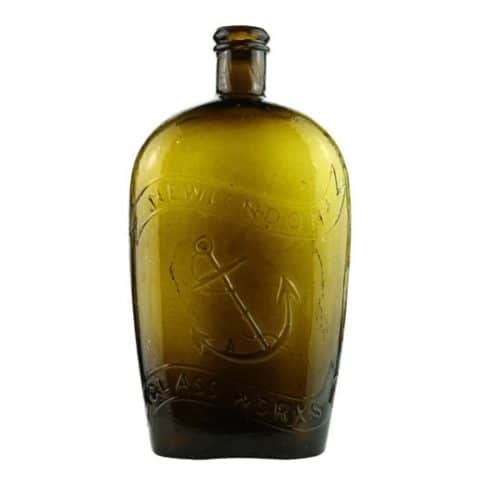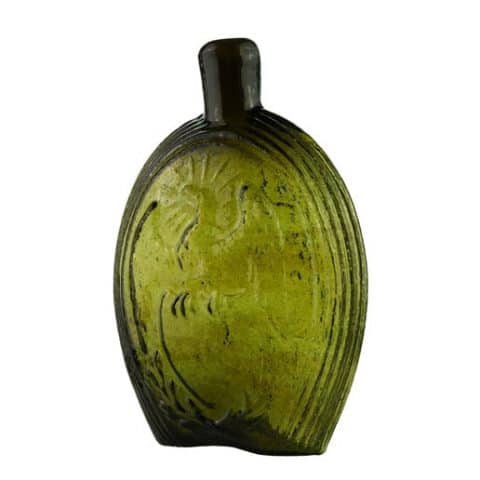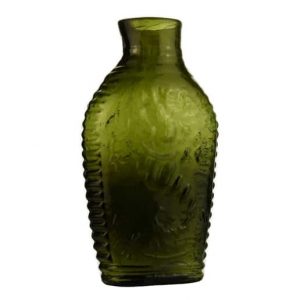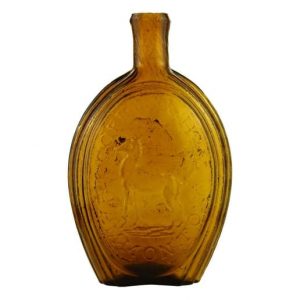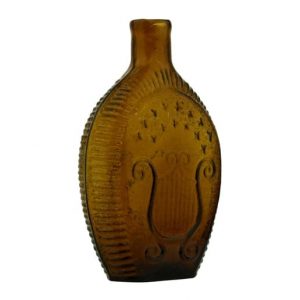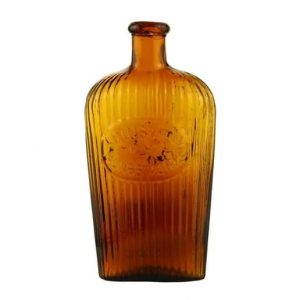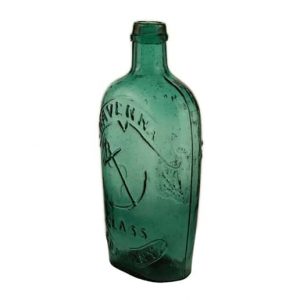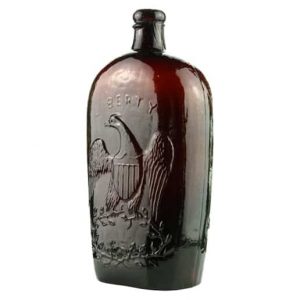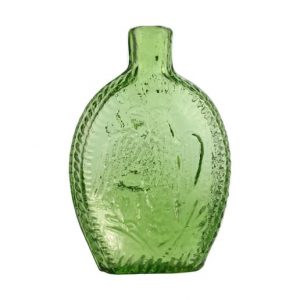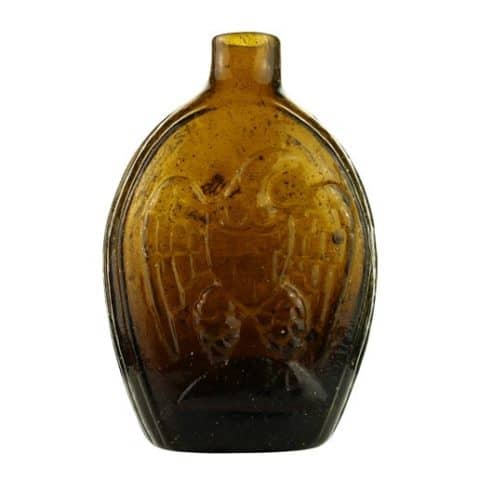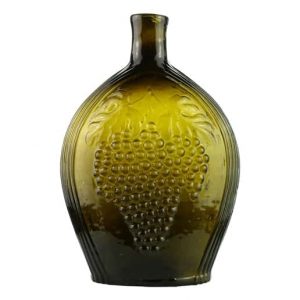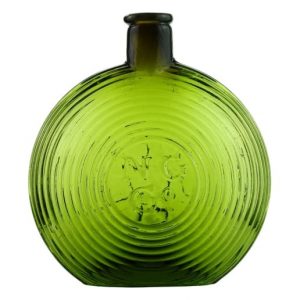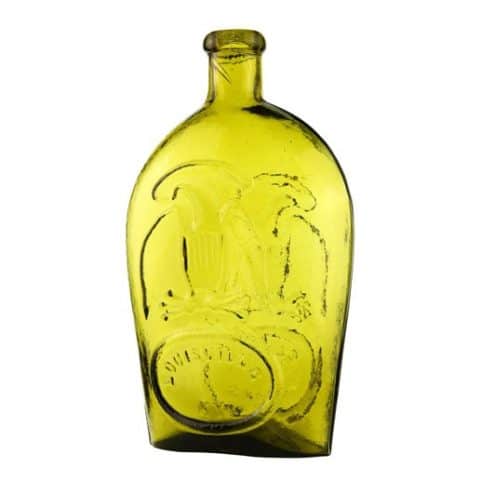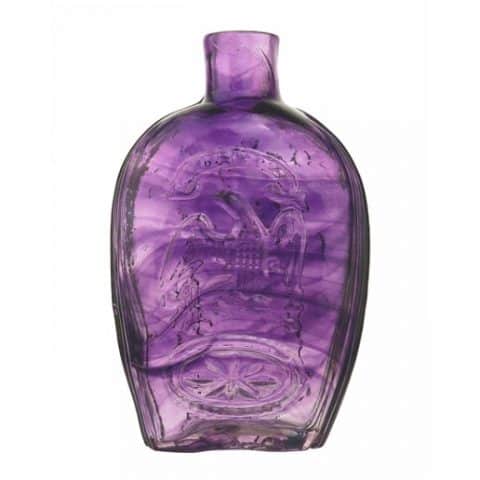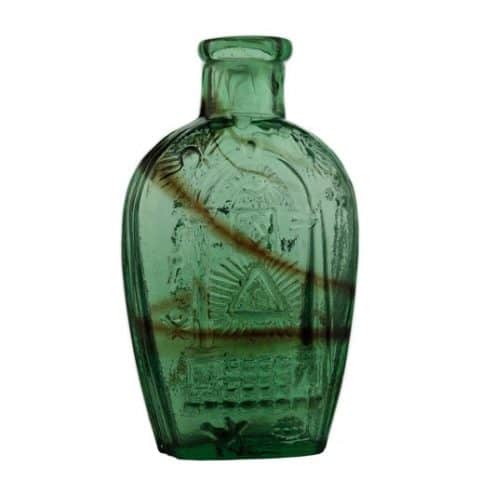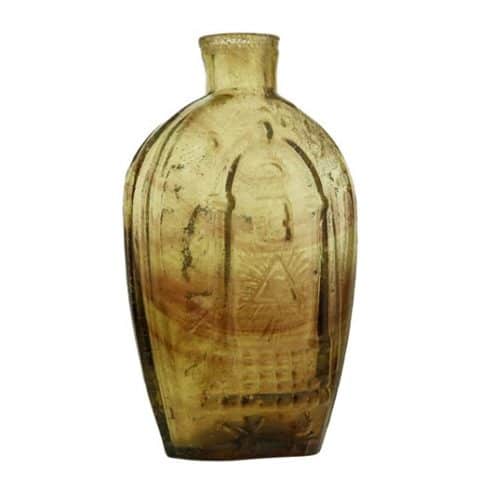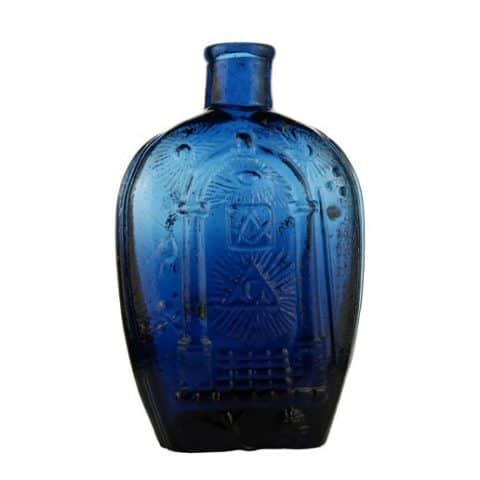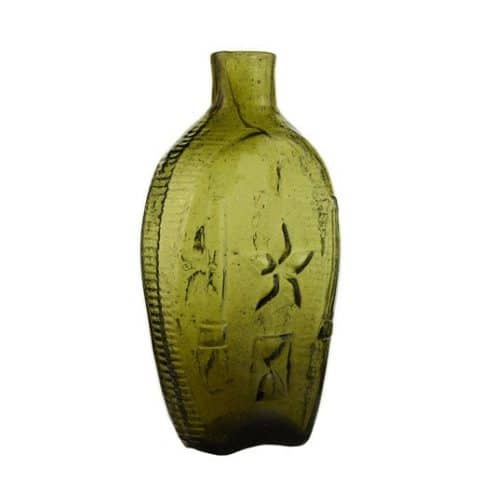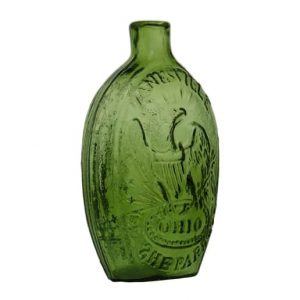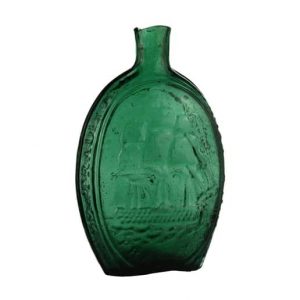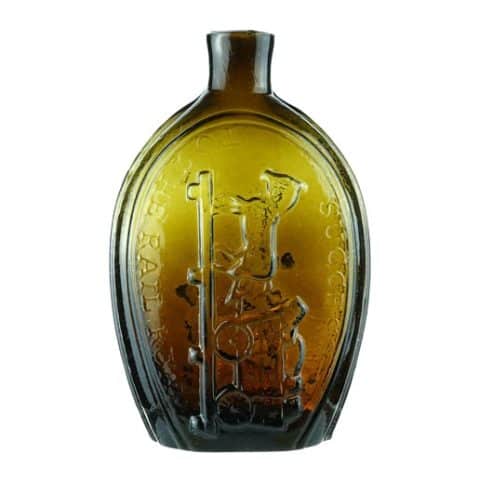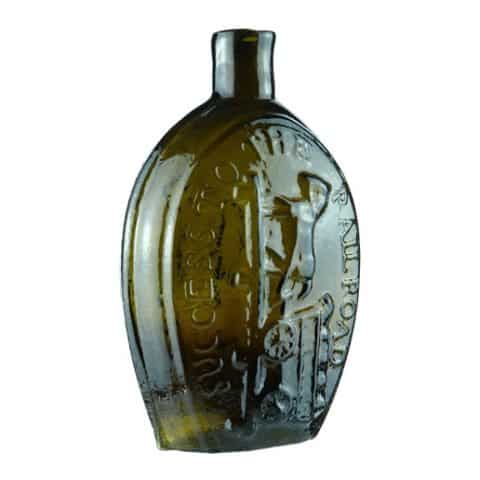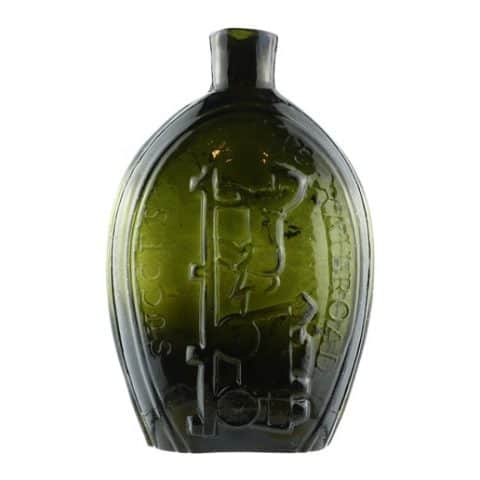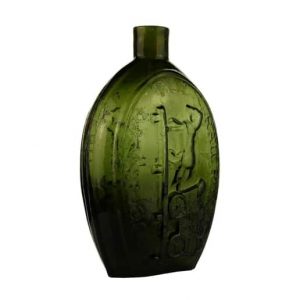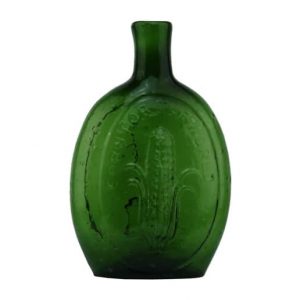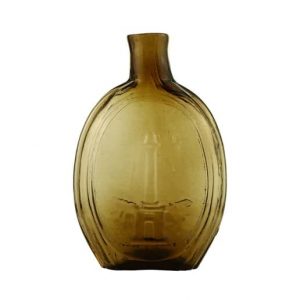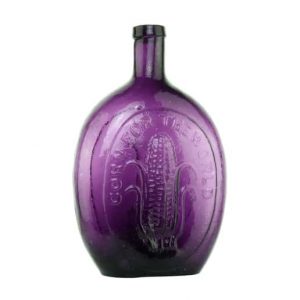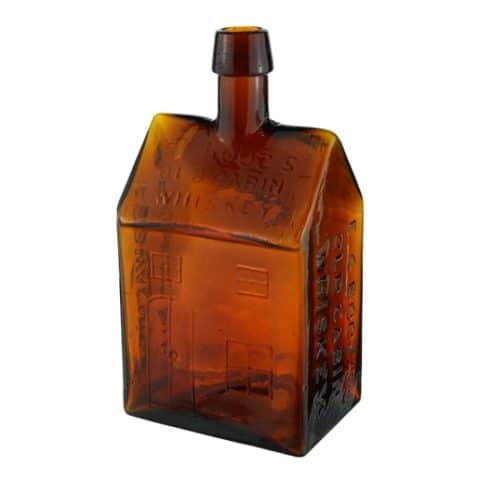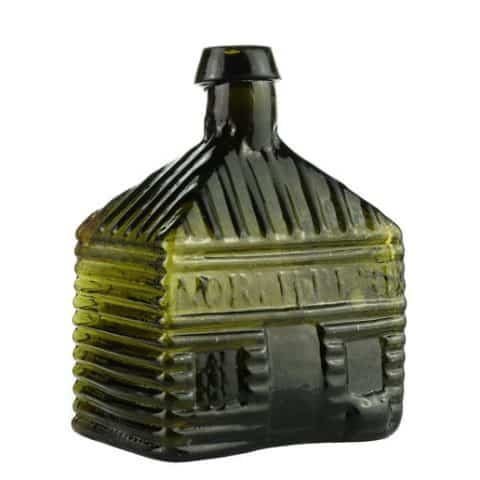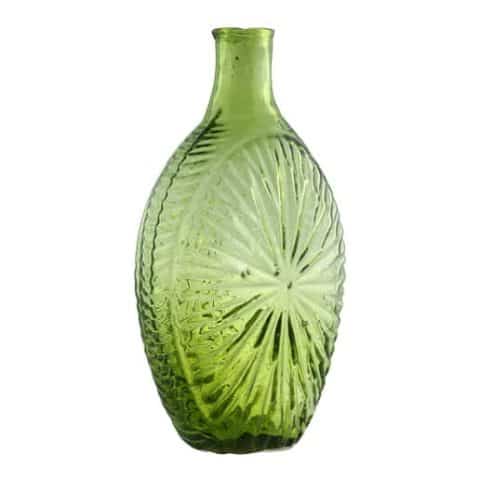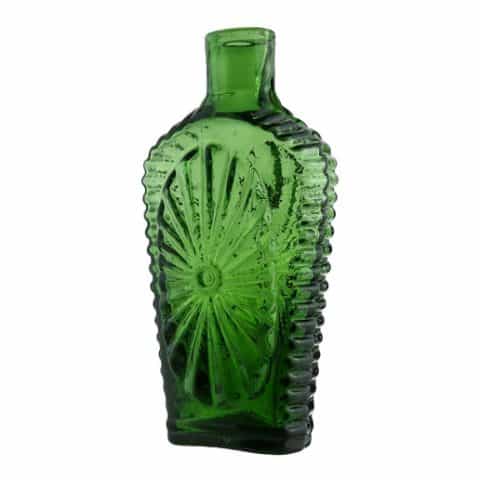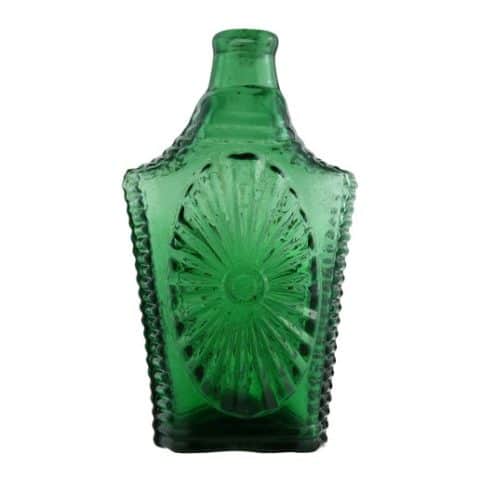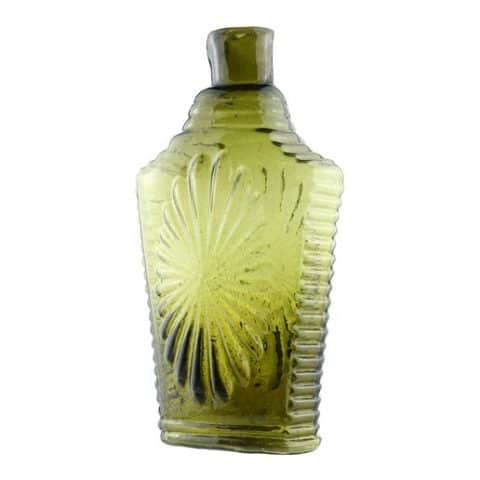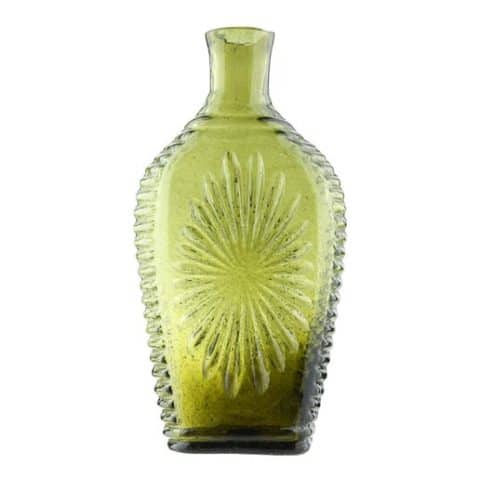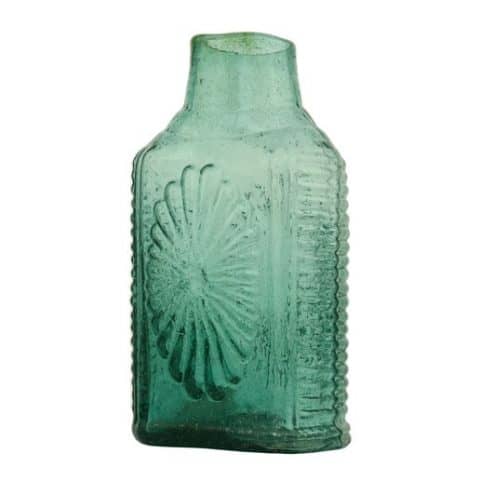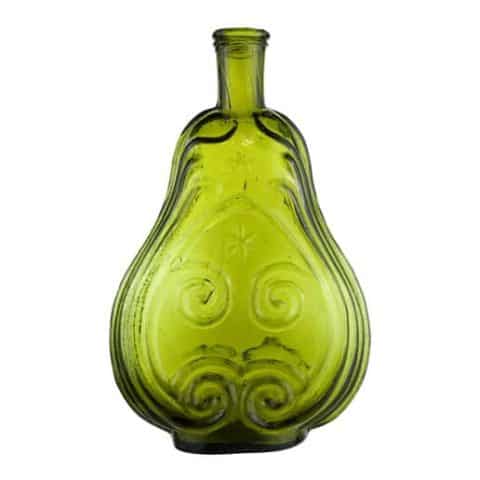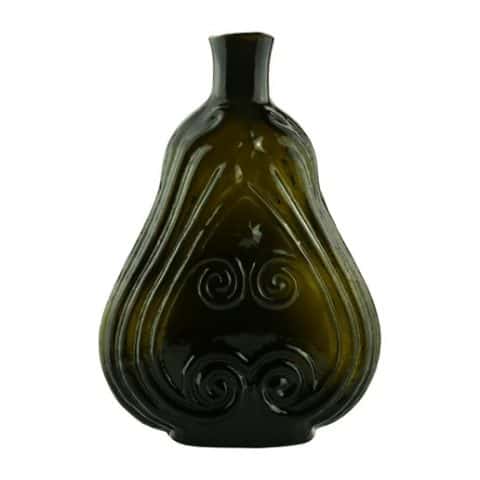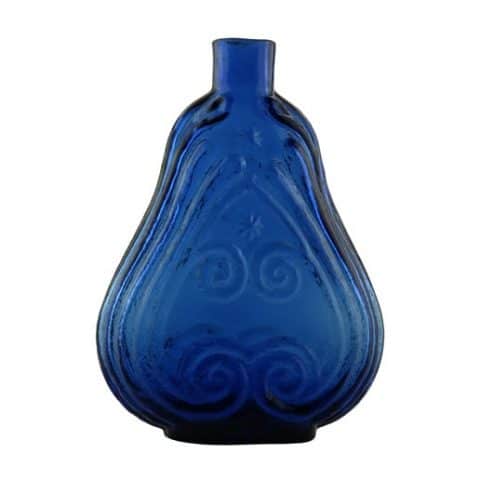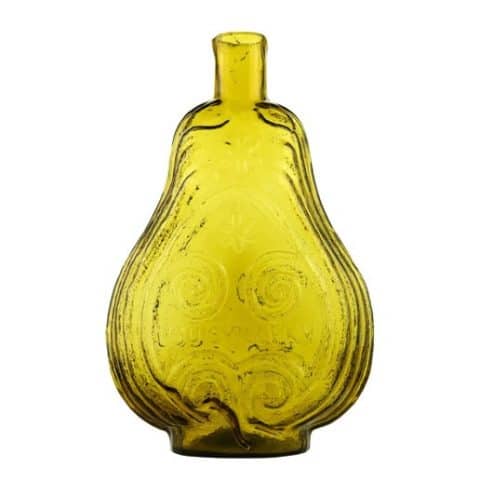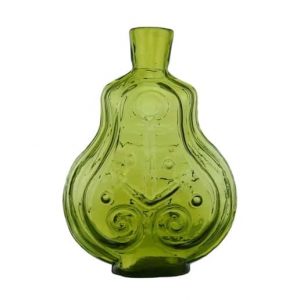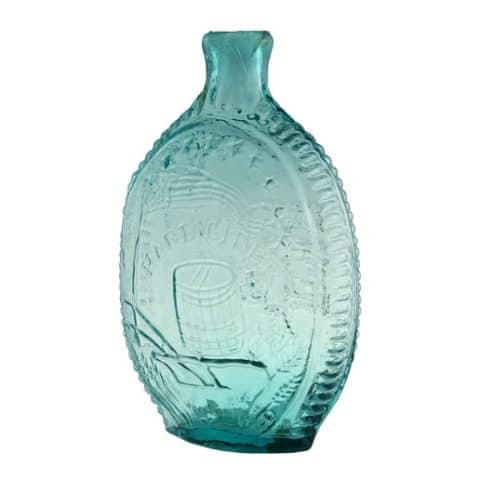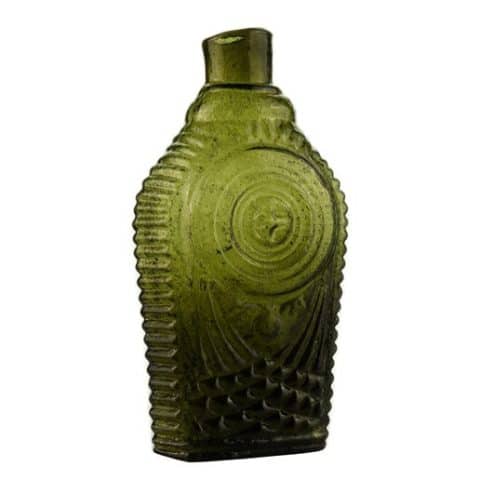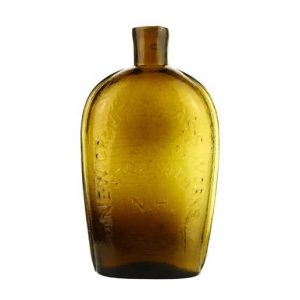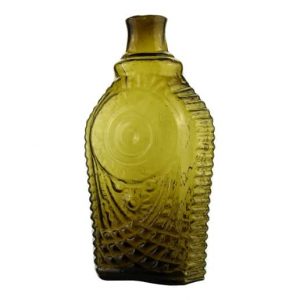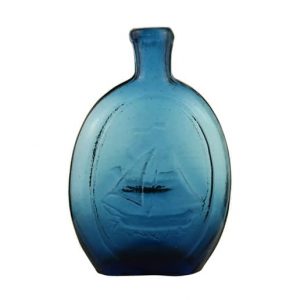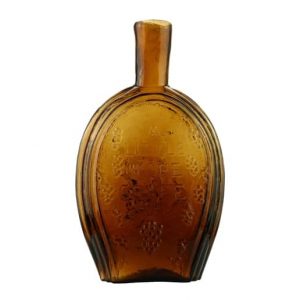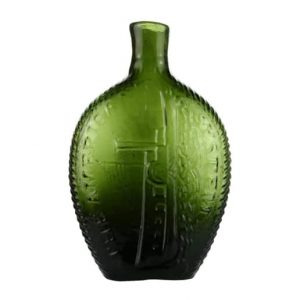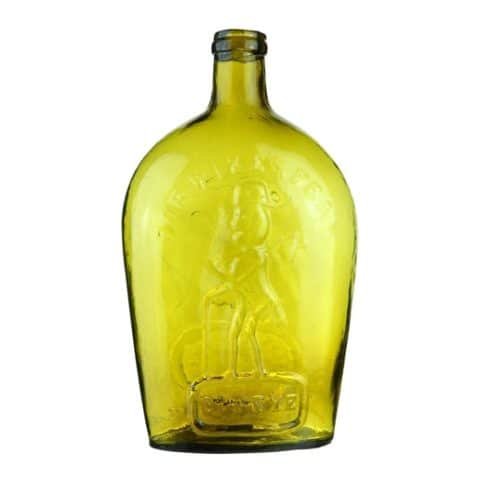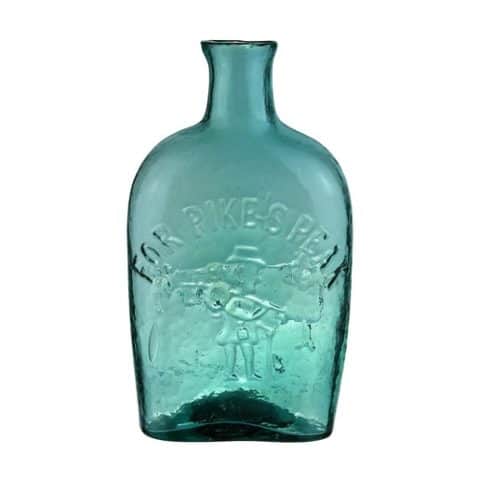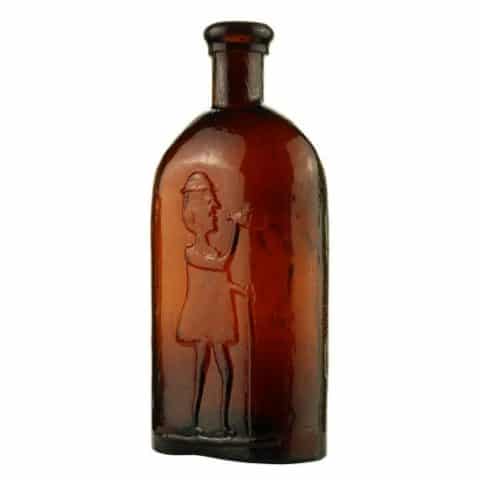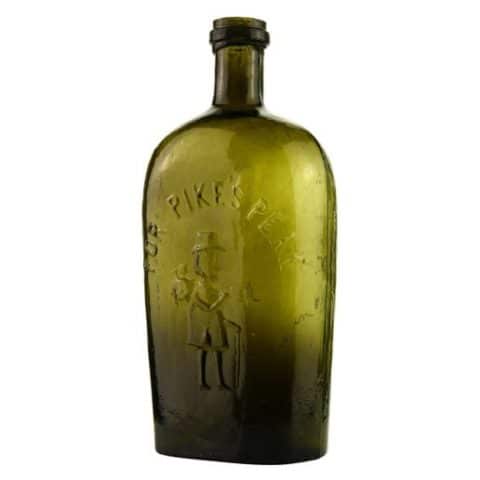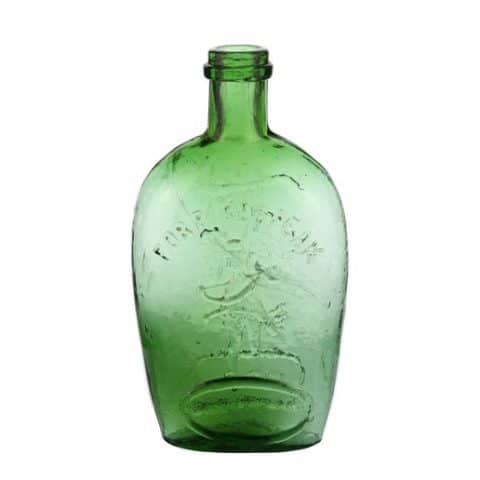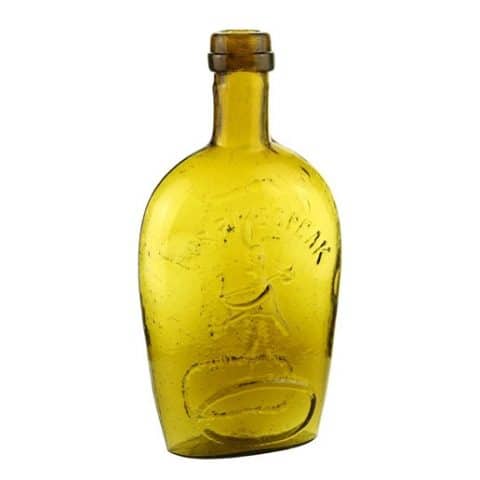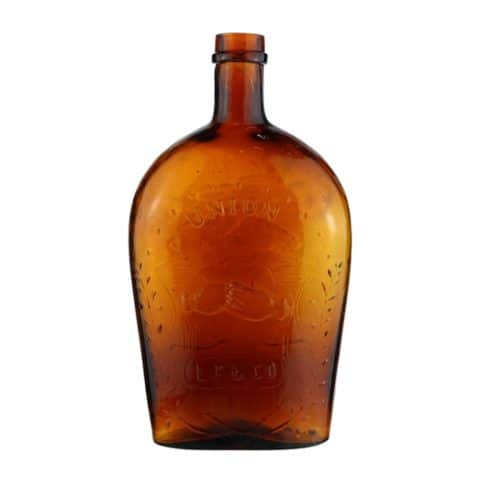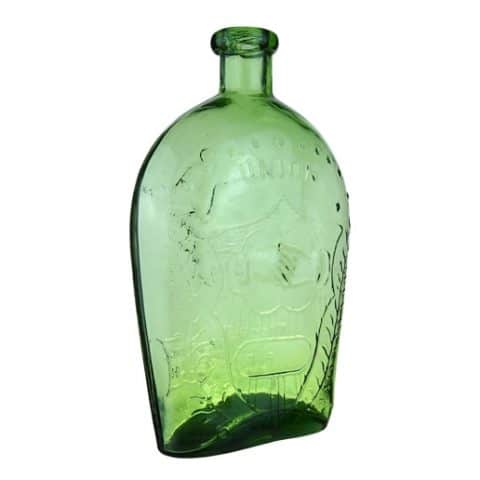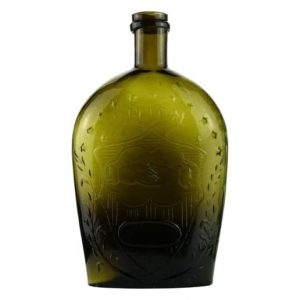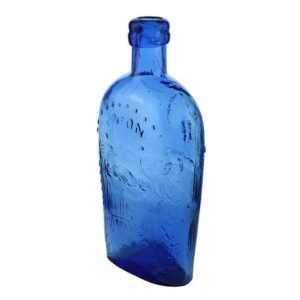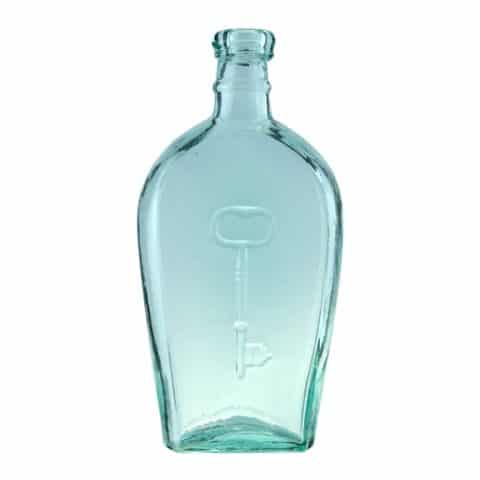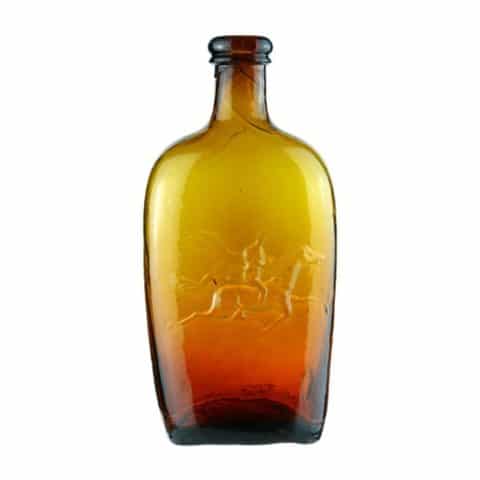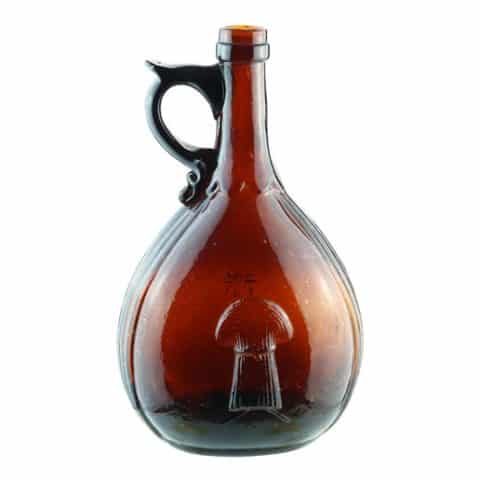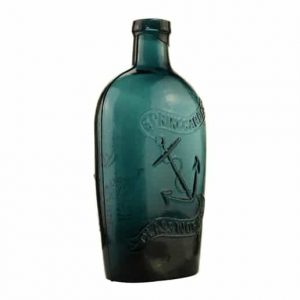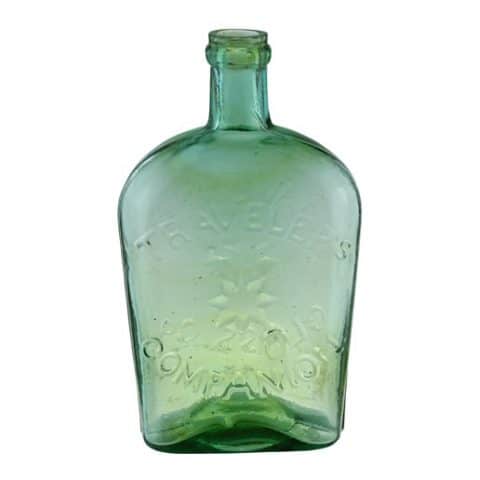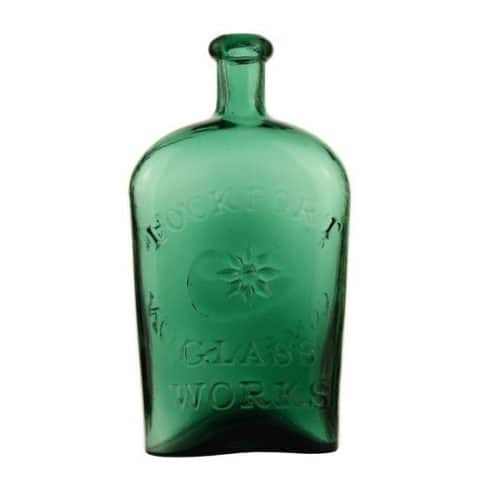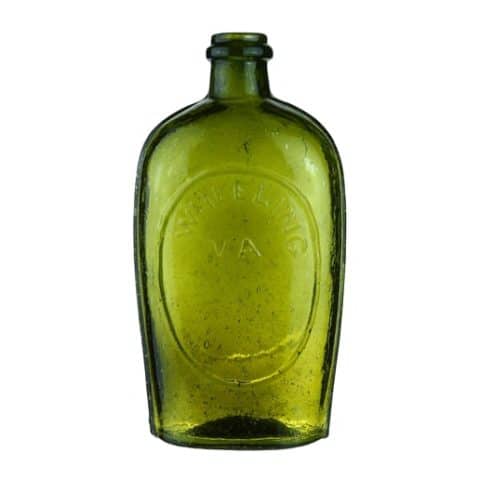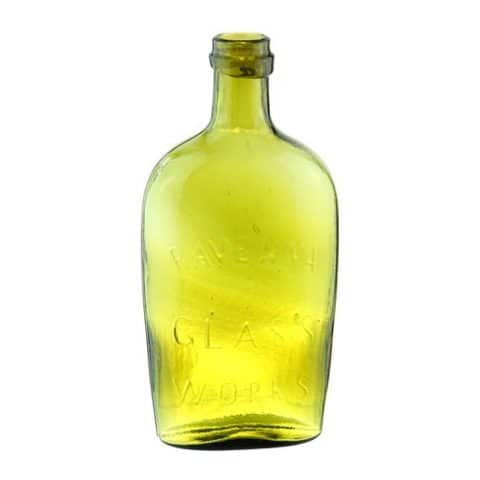GV-8 • “Success to the Railroad” and Horse and Cart Flask
GV – 8
“Success to the Railroad” and Horse and Cart – Eagle
Historical Flask
Coventry Glass Works, Coventry, Connecticut
Deep Olive Green Pint
Provenance: Richard S. Ciralli Collection, Corning Exhibition, Corning, N.Y., 1953, ex Edmund & Jayne Blaske Collection

We are looking at a best-possible example of a pint GV-8 “Success to the Railroad” and Horse Pulling Cart – Eagle flask in a deep olive green. The pedigree is outstanding as this flask was on display at the Corning Exhibition in Corning, N.Y., in 1953 and was represented as Lot 619 in the Skinner-Heckler two-day public auction of The Edmund & Jayne Blaske Collection of American Historical Flasks on Friday and Saturday, May 20, 21, 1983.
See a second example of a GV-8 “Success to the Railroad” and Horse Pulling Cart – Eagle in olive-yellow.
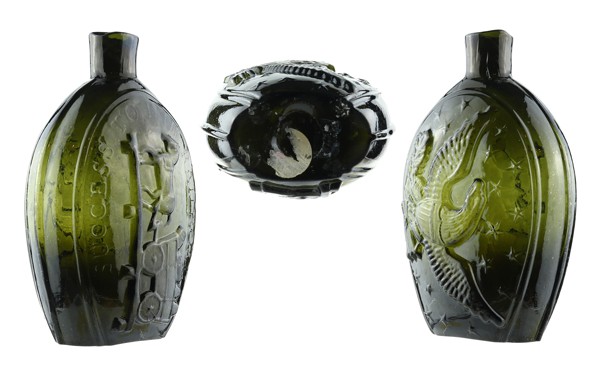
When looking at the design within the horseshoe oval panel on the obverse side of our GV-8 “Success to the Railroad” flask, there is an embossed horse pulling a cart toward the flask lip with an embossed rail beneath the horse and cart. There is delicate embossed serifed copy reading ‘SUCCESS TO THE RAILROAD’ which appears in a horseshoe shape. A horseshoe ribbing surrounds the pictorial to create the oval panel. The railroad or railway, both the horse-and-cart type and the steam locomotive, inspired many early American flask designs. Of the fourteen railroad flasks charted, the slogan “Success to the Railroad” appears on seven.

The reverse side of the flask has an enlarged American eagle lengthwise with its head turned to the left with wings partially raised and spread. There is a shield with seven vertical and two horizontal bars on the breast. There are three thunderbolts or arrows in the eagle’s left talon and an olive branch in the right talon. The eagle is in high relief. There are seventeen large 5-pointed stars surrounding the eagle. The American eagle was chosen to decorate more flasks than any other single motif in the entire repertoire of flask design elements. It is not hard to understand why, as our young country chose the American bald eagle as its emblem to signify strength, power, and sovereignty on the Great Seal of the United States.
The pint flask has a plain lip and a pontil mark. The flask edges have three verticle ribs with a heavy medial rib. You can find this flask in amber, olive amber, golden amber, medium to deep olive-yellow, and rich deep olive green.
While the “Success to the Railroad” GV-2 flask in our museum pictures a “steam locomotive,” this museum example of a pint “Success to the Railroad” flask features a “horse and cart railroad.” During the throes of the Industrial Revolution, there were horses pulling carts on rails as the Baltimore & Ohio Railroad ran on horsepower. Eventually, steam would win over, and transportation would be changed forever.
The illustration segment below is from David C. Johnson’s lithograph of the “Granite Railway” operating out of Quincy, Massachusetts. The railway, which opened on October 7, 1826, was the first in the United States. Horse-drawn carts carried the granite block for the Bunker Hill Monument 2-¾ miles from the quarry to Neponset River.
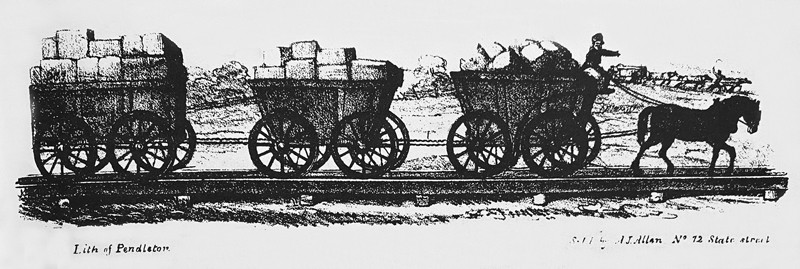
Coventry Glass Works
Seven men agreed to erect a glass factory in Coventry, Connecticut on January 14, 1813, along the Willimantic River. Four of the men, Captain Nathaniel Root, Ebenezer Root, Nathaniel Root Jr., and Joseph A. Norton all of Coventry were not glassmakers. The group included Eli Evans, Thomas W. Bishop, and Uriah Andrews, glassblowers from East Hartford that had the experience to run the day-to-day operations. Eli, Thomas, and Uriah were to use their expertise where needed in the glass factory and be compensated at $26 per month and $45 for each year they worked in the plant. In 1816 there was an agreement to expand by adding buildings. Thomas Stubbins was operating the glassworks by 1820. Lafayette flasks having embossed “T.S.” were made sometime around 1825.
The brother of Thomas may have entered the business sometime in 1825. The “S.S.” on some Lafayette flasks could be the entry of a brother to the glassworks or possibly a mistake. Later in 1825, Rufus B. Chamberlain joined the firm and they were now Stebbins & Chamberlin. The “S & C” is found on some flasks. In 1828, Jasper Gilbert, John Turner, and Rufus B. Chamberlain with John Turner’s brother Levi took control forming Gilbert Turner & Company. Lack of wood is said to be the reason for the glassworks closing in 1848, but accounting books seem to indicate sales into 1849.
Primary Image: GV-8 “Success to the Railroad” and Horse and Cart – Eagle flask imaged on location by the FOHBC Virtual Museum midwest studio led by Alan DeMaison.
Primary Image: GV-8 “Success to the Railroad” and Horse and Cart – Eagle flask imaged on location by the FOHBC Virtual Museum midwest studio led by Alan DeMaison. Flask from the Chris Bubash collection.
Support: Reference to American Bottles and Flasks and Their Ancestry by Helen McKearin and Kenneth M. Wilson, Crown Publishers Inc., New York, 1978.
Support: Reference to Coventry Glass Works by Bill Lockhart, Beau Schriever, Bill Lindsey, and Carol Serr.
Support: Reference to The Coventry Glassworks 1815-1848, The Museum of Connecticut Glass
Support: Reference to Success to the Railroad – The Baltimore & Ohio Railroad Museum
Support Image: Auction Lot 362: “Success To The Railroad” And Horse And Cart – Eagle Historical Flask, Coventry Glass Works, Coventry, Connecticut, 1830-1848. Medium to deep olive-yellow, sheared mouth – pontil scar, pint; (light exterior high point wear). GV-8 One of the more attractive railroad flasks with the high relief eagle. Fine condition. – Norman Heckler Jr. & Sr., Norman C. Heckler & Company
Support Image: Auction Lot 285: “Success To The Railroad” And Horse And Cart – Eagle Historical Flask, Coventry Glass Works, Coventry, Connecticut, 1830-1848. Medium olive-yellow shading to yellow-olive in base, sheared mouth – pontil scar, pint; (light exterior high point wear). GV-8 Attractive bright color and strong mold impression. Fine condition. – Norman Heckler Jr. & Sr., Norman C. Heckler & Company
Support Image: David C. Johnson’s lithograph of the “Granite Railway” – The American Antiquarian Society, Worcester, Massachusetts.
Join the FOHBC: The Virtual Museum is a project of the Federation of Historical Bottle Collectors (FOHBC). To become a member.

